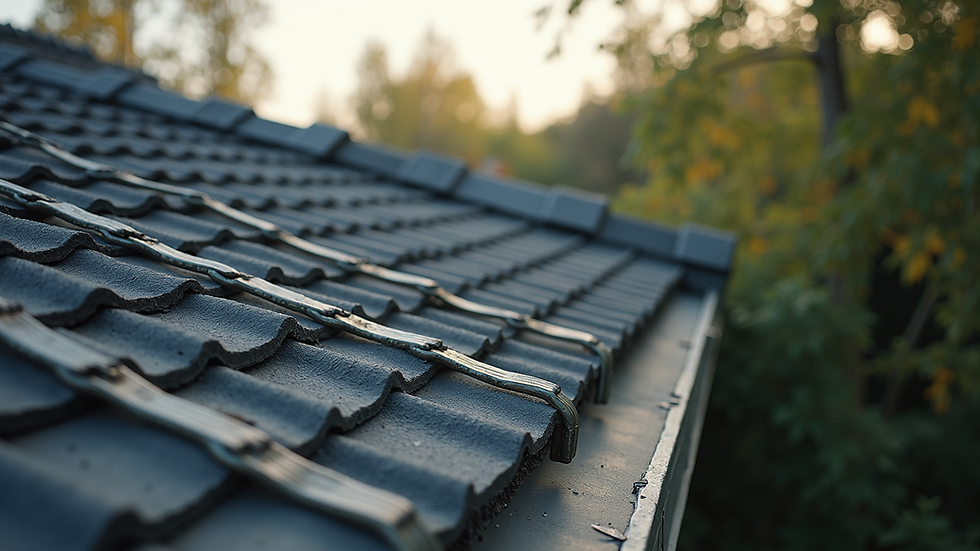Windstorm Mitigation Inspections for Home Safety
- Nasir Uddin
- Sep 22
- 4 min read
When it comes to protecting your home from severe weather, understanding the risks and taking the right precautions is essential. Windstorms can cause significant damage to properties, especially in areas prone to hurricanes and strong winds. That is why I want to share important information about windstorm mitigation inspections and storm safety evaluations. These inspections help identify vulnerabilities in your home and suggest improvements to keep you and your property safe.
What Are Storm Safety Evaluations and Why Are They Important?
Storm safety evaluations are thorough assessments of your home’s ability to withstand severe weather conditions. These evaluations focus on the structure, roofing, windows, doors, and other critical components that can be affected by high winds and flying debris. The goal is to find weak points and recommend upgrades or repairs.
Storm safety evaluations are important because they:
Help reduce the risk of damage during windstorms.
Provide peace of mind knowing your home is better protected.
Can lower insurance premiums by qualifying for discounts.
Increase the overall value of your property.
By having a professional inspect your home, you get a clear picture of what needs to be done to improve safety. This is especially valuable in Central Florida, where windstorms and hurricanes are common.

Key Components Checked During a Storm Safety Evaluation
During a storm safety evaluation, several parts of your home are carefully examined. Here are the main areas that inspectors focus on:
Roof and Roof Covering
The roof is the first line of defense against wind damage. Inspectors check for:
Loose or missing shingles.
Proper fastening of roofing materials.
Condition of flashing around chimneys and vents.
Roof shape and slope, which affect wind resistance.
Windows and Doors
Windows and doors are vulnerable points during windstorms. The evaluation includes:
Checking for impact-resistant glass or storm shutters.
Ensuring doors have strong frames and secure locks.
Verifying that garage doors are reinforced to withstand pressure.
Structural Connections
The way your home is built affects its ability to resist wind forces. Inspectors look at:
The connections between the roof and walls.
The anchoring of walls to the foundation.
The presence of hurricane straps or clips.
Exterior Walls and Siding
Walls and siding must be secure to prevent wind intrusion. The inspection covers:
Condition of siding materials.
Proper attachment to the framing.
Any gaps or cracks that could allow water or wind inside.
Other Protective Features
Additional features that improve storm safety include:
Properly installed gutters and downspouts.
Secure fencing and outdoor structures.
Landscaping that reduces wind impact.
Each of these components plays a role in protecting your home. A detailed report from the inspection will highlight what is working well and what needs attention.
How much is a wind mitigation inspection in Florida?
Understanding the cost of a wind mitigation inspection is important when planning for home safety. In Florida, prices can vary depending on the size of the home and the inspection company. Typically, a wind mitigation inspection costs between $100 and $200.
This inspection is a worthwhile investment because it can lead to insurance discounts. Many insurance companies offer reduced premiums for homes that pass wind mitigation inspections. The savings over time often exceed the cost of the inspection.
When choosing an inspector, look for certified professionals with experience in Florida’s building codes and weather conditions. A thorough inspection will provide you with valuable information and help you make informed decisions about upgrades.

How to Prepare for a Windstorm Mitigation Inspection
Preparing your home for a windstorm mitigation inspection can make the process smoother and more effective. Here are some steps you can take:
Gather Documentation
Collect any previous inspection reports, building permits, or renovation records. This information helps the inspector understand your home’s history.
Clear Access Areas
Make sure the inspector can easily access the roof, attic, garage, and exterior walls. Remove any obstacles or debris.
Check for Visible Damage
Repair obvious issues like broken windows, missing shingles, or damaged doors before the inspection. This shows you are proactive about maintenance.
Prepare Questions
Write down any concerns or questions you have about your home’s wind resistance. The inspector can provide specific advice.
Be Present During the Inspection
If possible, be at home during the inspection. This allows you to see the process and get immediate feedback.
By preparing well, you help the inspector do a thorough job. You also gain a better understanding of your home’s condition and what improvements are needed.
Benefits of Scheduling Regular Windstorm Mitigation Inspections
Regular windstorm mitigation inspections are a smart choice for ongoing home safety. Here are some benefits of scheduling inspections periodically:
Early Detection of Issues
Inspections catch problems before they become serious. Early repairs save money and prevent damage.
Updated Safety Measures
Building codes and safety standards change over time. Regular inspections ensure your home meets current requirements.
Insurance Advantages
Maintaining wind-resistant features can keep your insurance premiums low. Insurers appreciate homes that are well maintained.
Increased Property Value
A home with documented storm safety features is more attractive to buyers and investors.
Peace of Mind
Knowing your home is prepared for windstorms reduces stress during storm season.
Scheduling inspections every few years or after major storms is a good practice. It keeps your home in top condition and ready for whatever weather comes.

Taking Action After Your Windstorm Mitigation Inspection
After your inspection, you will receive a detailed report outlining the findings. This report is your guide to improving your home’s safety. Here are some steps to take:
Review the Report Carefully
Understand each recommendation and its importance.
Prioritize Repairs and Upgrades
Focus on the most critical issues first, such as roof repairs or window reinforcements.
Get Multiple Quotes
For any work needed, obtain estimates from licensed contractors experienced in wind mitigation.
Schedule Repairs Promptly
Don’t delay necessary improvements. Timely action reduces risk.
Keep Records
Save all inspection reports, repair invoices, and contractor warranties. These documents are useful for insurance and resale.
Inform Your Insurance Company
Share your inspection results and completed upgrades with your insurer. This may qualify you for discounts.
Taking these steps ensures that your home is safer and that you maximize the benefits of your inspection.
I hope this information helps you understand the value of windstorm mitigation inspections and storm safety evaluations. Protecting your home from wind damage is a wise investment. It safeguards your property, lowers insurance costs, and gives you confidence during storm season. If you are in Central Florida, consider scheduling an inspection soon. Your home deserves the best care to face the challenges of severe weather.






Comments